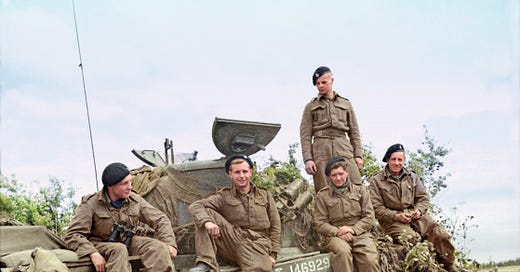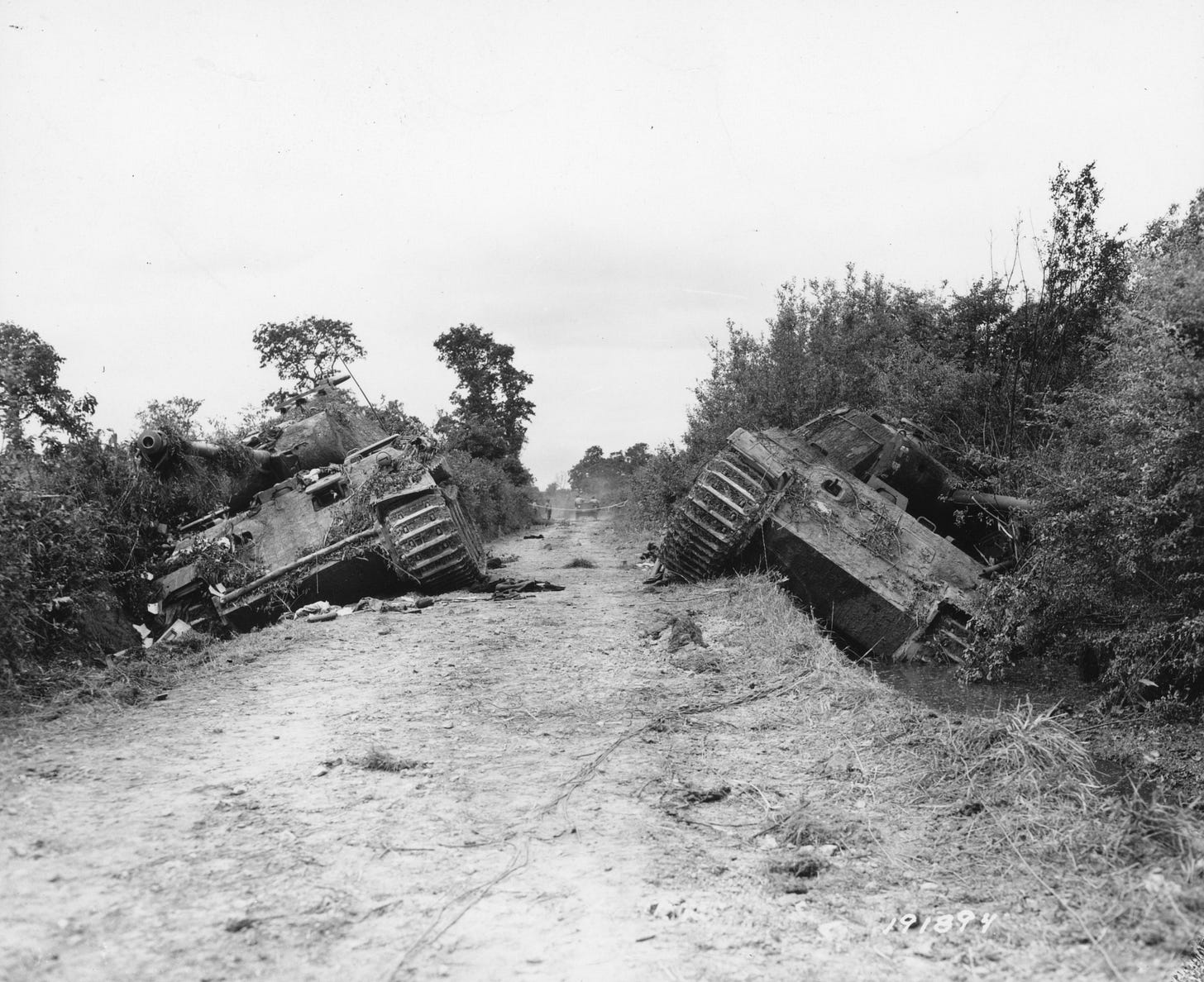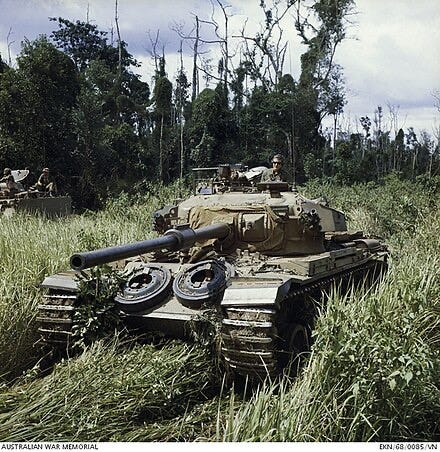‘Is the age of the tank now over?’ So we asked Steve Zaloga the other day on We Have Ways of Making You Talk podcast. Steve paused a moment, smiled wryly and said, ‘The age of the tank has been over since 1917.’ He then went on to explain. A year after the first tanks lumbered over the battlefield of the Somme in November 1916, there were those claiming such a weapon was already obsolescent and then rightly pointed out there have been people continuing to do so ever since. No, he said, the advent of plentiful battlefield drones has made no difference. In the history of weaponry, a new item appears and then so does a counter-measure, and then a counter-measure to the counter-measure and so on. In Ukraine, for example, anti-drone guns have started entering the battlefield; these use directed radio waves to overwhelm the connection between a drone and its operator – or, what is otherwise known as jamming. There are also now anti-drone backpacks, which include jamming equipment, smoke screens and other ingenious improvisations to either destroy drones or cut off the links between the drone and the operator.
As Steve pointed out, tanks have always been vulnerable, but from the onset of their introduction to the battlefield, they offered both protection and fire-power to the accompanying infantry. Steve reckoned that so long as there are infantry, there will be a role for tanks too. I think he’s spot on.
And Steven J. Zaloga knows what he is talking about. I first came across him when I picked up one of his many books, but he was then given a hearty endorsement by Nicholas Moran, aka The Chieftan, an Irish-American US cavalry reservist and also the historical advisor for the video game, World of Tanks. Nick is also deeply knowledgeable about matters of armoured warfare, so when he told me I should talk to Steve, I listened. Steve is a defence consultant, works for the Institute for Defense Analyses and is, additionally, the author of more than forty books, many of which deal with armoured warfare. When we were talking to him the other day, he also pointed out that when judging the efficacy of a tank, a battlefield commander and those who crew it are likely to have different views. So, to take the example of World War II, he said commanders loved the M4 Sherman, the standard US-built tank of the western Allies from 1942 onwards. There were lots of them, and numbers counted for a great deal, they were mechanically reliable, easy to maintain, and could fire a mixture of armour piercing shells and high-explosive. The crews, however, might have pointed out its inferior gun compared with, say, the Panther or Tiger tank, and inferior armour compared to those German beasts.
He then went on to say that while people get very hung up about tank duels, tank-on-tank engagements were actually very rare during the Second World War. This was absolutely true – they amounted to less than 10% of all tank engagements. This was for a number of reasons, not least because the Germans had far fewer of them than the Allies, either in the west or the Soviet Union. For example, the Soviet Union built 84,070 of the T-34, while the US built 49,234 Shermans and some 74,000 Sherman hulls that were used for other things, such as tracked artillery. In contrast, the single most-produced German tank, the Panzer Mk IV, topped out at 8,553. Only 1,347 of the much-vaunted Tiger were ever built. And the other reason there were so few tank-on-tank duels was because tanks were mainly designed to give fire-support for the infantry in a wide variety of different scenarios whether in the confines of an urban battle, through open plains as well as hedgerows, jungle or desert.
And nor was it the case that the tank with the bigger gun and thicker armour always came out on top. Rather, it tended to be the tank that fired first that won the day. For example, on the afternoon of Monday, 26 June 1944, Major John Semken of the Sherwood Rangers Yeomanry, turned down a road in the village of Fontenay-le-Pesnil in Normandy in his standard 75mm gun Sherman and came face-to-face with a Tiger. On paper, the Tiger, with its 88mm high-velocity gun, should have blown Semken and his crew to pieces. Instead, Semken’s Sherman fired one armour piercing round instantly, then followed it with nine further high explosive rounds, all within thirty seconds, and before the Tiger’s crew could fire once. With the Tiger’s driver injured, the tank pelted with shells and smoke, the crew bailed out and surrendered, so making their tank inert in the process.
Nor was that all, for a couple of hours later that same evening, Semken’s A Squadron attacked the Rauray Ridge and destroyed thirteen enemy tanks for no loss of their own. Sergeant George Dring’s Sherman alone, also with a 75mm gun of medium velocity, accounted for five, including two Tigers, one Panther and two Panzer Mk IVs. It was quite a feat but reflected the superior training and experience of the Sherwood Rangers against poorly trained and exhausted German panzer crews. The rate of fire of the Shermans was also vastly superior to that of the Panther and Tiger, not least because the shells were smaller and so easier to handle, but also far more manoeuvrable. The Tiger was also equipped with a six-speed, semi-hydraulic pre-selector gearbox designed by Ferdinand Porsche. It sounds complicated and so it was. The Sherman, on the other hand, had a standard four-speed forward and one reverse transmission, with synchromesh that was entirely familiar to young American – and British – drivers used to an abundance of motor vehicles. By contrast, Germany began the war with considerably fewer motor vehicles than either Britain, France or the USA, so had less of a pool of driving experience to call upon. With chronic shortages of fuel, and with substantially fewer vehicles than the Allies, they were expecting inexperienced crews with little driving or mechanical experience to quickly master huge tanks that were far more complicated and so increasingly difficult to drive than those produced in the US or in Russia.
The lessons from World War II were broadly this: that tanks needed to be agile and as easy to operate as possible, they required a big, high-velocity gun more than thick, heavy armour, and they needed as low a profile as possible. The British Centurion tank, for example, which came into operation just after the end of the war, had a 105mm gun, very low profile, and weighed 50 tons, lighter than a Tiger and only a little heavier than a Panther despite the much bigger main gun. Derivatives of this are still being used to this day, nearly eighty years on. The other vital lesson was that training and experience counted for a huge deal and were, more often than not, more important than the weapon being used.
Much has been made of the slaughter of Russian tanks at the start of the Ukraine War, prompting wide claims that the age of the tank was over when really, the prime reason so many were lost was because they were being flung into action without infantry support; use of tanks with infantry should be a two-way exercise: infantry can protect tanks from close-range attack and be a tank’s eyes and ears.
Even today, now that drones are so prevalent, there is still very much a role any for armour. Again, how effective they are depends to a considerable amount on how they are used and how well trained are the crews operating them. Send a column of T-90 tanks toe-to-tail down a road with no infantry support and you are asking for trouble. Use them judiciously, hand-in-glove with infantry and with highly trained crews, and they can still provide immense destructive fire-power in almost any environment. There are, of course, caveats: numbers count, as the Germans discovered the hard way during the war. It doesn’t matter how good a tank is or how experienced the crew if coming up against overwhelming enemy fire-power.
The worry here in the West, and especially in Britain and other leading European nations with woefully depleted armed forces, is that many of the lessons of the Second World War have now been completely forgotten. The Germans built ever-larger tanks with ever-larger guns and thicker armour because they were incapable of the kind of mass-production of the Soviet Union, USA and to lesser extent, Britain. The alternative to mass production was better tanks but fewer in number; better in that context meant a bigger gun and thicker armour, yet that was to misunderstand how armour was effectively used in that conflict. Those bigger, heavier tanks might have looked terrifying to anyone coming up against them but they none the less came with a host of practical problems. They were more complicated and so more difficult to build, much harder to maintain in the field, and more prone to mechanical failure. They also used far more fuel and required even more fuel and commitment to keep them on the road in terms of support vehicles, recovery vehicles, winches and so on. Yet the one product Germany lacked more than any other was oil, which meant the fuel-starved Germany armed forces were equipped with the most thirsty of tanks.
In Britain, the Army has foregone any kind of mass production and instead followed the – failed German wartime model of producing ever-more complicated and sophisticated upgrades in fewer numbers. The latest planned Challenger 3 has already struggled with Britain’s interminable procurement process, is difficult and more expensive to build and their numbers are pitifully few. Even when they do come into service, they’ll be used by crews less well trained because Britain has given up its all-arms training grounds in Germany and Canada. It’s exactly the same mistake the Germans made in the last war. Exactly 148 Challenger 3s are due to be built, yet as has been learned in Ukraine, modern wars can still be fought with the kind of numbers last seen in the Second World War. What is needed is far greater production, more training and a tank that will do most of what is required – like a late-model Centurion or a Challenger 2, for example, because tanks are not going to desert the battlefield any time soon. Hopefully, those conducting the latest Strategic Defence Review know their history, as do all those in the MOD and government charged with defending the nation. Hope alone, though, is sadly not enough to win future wars.








What you don't agree with Elon Musks view! Surely the Stay-Puft Billionaire (@ Henry Morris PNG correspondent) cannot have been wrong. Perhaps we will see the Tesla Mk 1 MBT soon...hope he puts the AAA batteries in the right way around. Great article thanks for posting.
An interesting read James thanks for posting it. Not sure I fully agree on crews being less trained. The Army still uses Sennelarger in Germany along with armoured training whilst deployed on Op Cabrit. The Army is also investing heavily into simulation to reduce the cost burden of training.
Regarding the situation in Ukraine, whilst there are many lessons to learn from their experience it is important to take the right ones. The effectiveness of drones against armour for example is perhaps exaggerated by the poor deployment of armour by both sides. How many times have we seen a drone taking out a tank dropping a grenade on it? Look closely and in almost every case the tank is abandoned because it has been immobilised by ATGM or mines.